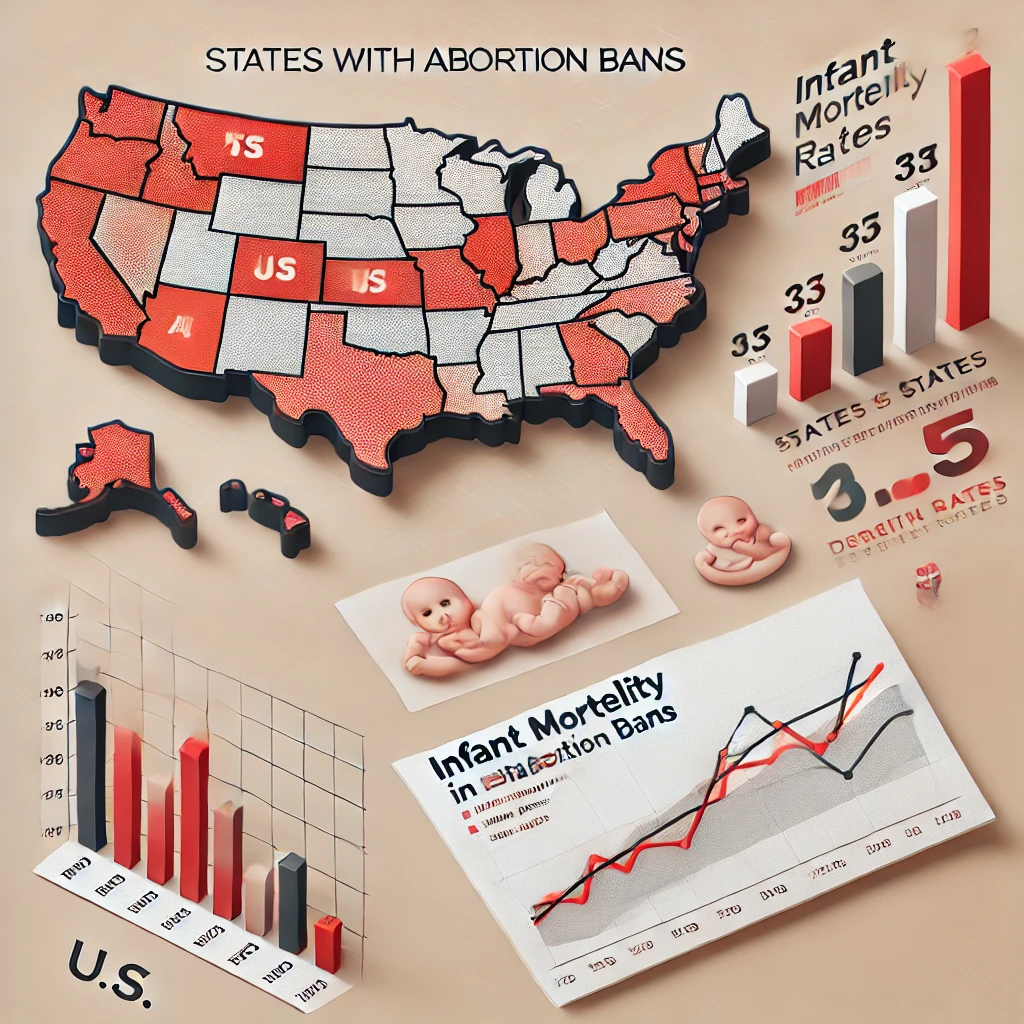A new study reveals that states enforcing abortion bans are experiencing higher-than-expected infant death rates, alongside increased birth rates. Published in the Journal of the American Medical Association (JAMA), the research highlights the disproportionate impact on marginalized communities, particularly in the South, where access to reproductive healthcare is limited.
The Alarming Findings
The study, funded by the National Institutes of Health, analyzed data from 14 states with complete or six-week abortion bans following the Supreme Court’s 2022 decision to overturn Roe v. Wade. Researchers found an estimated 478 additional infant deaths and 22,180 more live births than would have occurred without the bans. Infant deaths, which had been declining nationally for decades, rose by 5.6% in these states. Deaths due to congenital anomalies, or birth defects, increased by 10.9%, while deaths from other causes, such as birth complications, rose by 4.2%.
The impact was not evenly distributed. Non-Hispanic Black infants experienced an 11% higher death rate than expected, accounting for approximately 265 additional deaths. Birth rates also surged among Black, Latino, and other nonwhite populations, as well as among those on Medicaid, without college degrees, or who were unmarried or younger.
Why This Is Happening
The study’s co-authors, Suzanne Bell and Alison Gemmill of Johns Hopkins University, attribute the rise in infant deaths to restrictive abortion policies. “We have a very clear reason as to why it’s trending in the wrong direction,” Gemmill said. “It’s because of policy choices.”

Wealthier individuals often have the means to travel to states where abortion remains accessible, but those who are poor, nonwhite, or live in Southern states face significant barriers. Usha Ranji of KFF, a health policy nonprofit, noted that many are “being forced to continue a pregnancy, even though they knew that it would not result in them being able to take a child home.”
The Role of Geography and Access
The South, which already struggles with poor maternal and infant health outcomes, bore the brunt of the impact. Texas, in particular, stood out due to its large population, geographic size, and early adoption of restrictive abortion laws. The state’s 2021 “heartbeat bill,” which banned abortions after six weeks of gestation, forced many clinics to close, leaving residents with limited options.
Since the Dobbs v. Jackson Women’s Health Organization decision in 2022, more states have enacted similar bans. Florida recently implemented a six-week ban, and over half of all U.S. states—nearly all in the South—have restricted abortion access.
Broader Implications for Public Health
Infant mortality is often seen as a “bellwether” for overall public health, according to Gemmill. The rise in deaths signals broader systemic issues, including inadequate healthcare access and socioeconomic disparities. Black women, who already face higher maternal mortality rates, are particularly vulnerable.
ProPublica’s 2024 reporting highlighted cases like Amber Thurman and Candi Miller, Georgia women who died after being denied care under the state’s abortion ban. These stories underscore the human toll behind the statistics.
What’s Next?
The study’s authors plan to further investigate the effects of abortion bans on maternal health outcomes. Meanwhile, organizations supporting abortion access are struggling to maintain funding, which could exacerbate existing trends. Rachel Jones of the Guttmacher Institute warned, “It could be that these trends that we’re seeing are going to become even more exacerbated.”
Conclusion
The findings paint a grim picture of the consequences of abortion bans, particularly for marginalized communities. As states continue to restrict access, the ripple effects on infant and maternal health are likely to grow. The study serves as a stark reminder of the need for policies that prioritize healthcare access and equity.
“Of course, there are individual stories behind these numbers that we’re not even conveying here,” Gemmill said. Each statistic represents a life lost or irrevocably changed, underscoring the urgent need for action.



